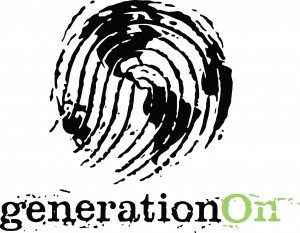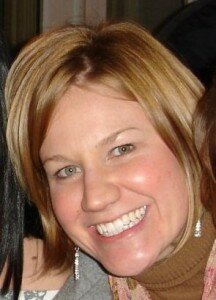
Friends,
 With education at the forefront of NBC News programming this week and online at www.educationnation.com, and with the release of Waiting for Superman, a documentary that follows a handful of promising kids through the education system, millions of individuals are asking themselves, what is their role in supporting reform and change in our public schools?
With education at the forefront of NBC News programming this week and online at www.educationnation.com, and with the release of Waiting for Superman, a documentary that follows a handful of promising kids through the education system, millions of individuals are asking themselves, what is their role in supporting reform and change in our public schools?
During the education plenary at the National Conference on Volunteering and Service in June, Secretary of Education Arne Duncan said, paraphrasing Horace Mann from a century ago,
“ Education is the great equalizer, no matter your race, creed, or zip code.” He added, “Education is not just a pathway to success; it is a prerequisite to success.”
Education is the great equalizer, no matter your race, creed, or zip code.” He added, “Education is not just a pathway to success; it is a prerequisite to success.”
Here at Points of Light Institute, our HandsOn Network affiliates are creating innovative in-school and after-school programming for volunteers. We are partnering with companies to help them mobilize their talent and assets to create educational change, and our newest enterprise, generationOn, is infusing service learning into the schools and inspiring young people to make their mark in the world.
I would like to highlight just a few examples that demonstrate the power of citizens making a difference in powerful ways to create stronger schools and successful students.
HandsOn Network
HandsOn Atlanta is partnering with the public school “Success for All” program, sending AmeriCorps members to  tutor elementary students in reading and math, and to help high school students with college readiness, both during and after school. Since 1994, more than 1,600 AmeriCorps members and volunteers have directly served more than 115,000 students in school-focused programs in Atlanta.
tutor elementary students in reading and math, and to help high school students with college readiness, both during and after school. Since 1994, more than 1,600 AmeriCorps members and volunteers have directly served more than 115,000 students in school-focused programs in Atlanta.
 An innovative program at our affiliate, New York Cares, pairs volunteers and students ages 5-12 to read and write together on weekday evenings. The goal is to encourage a love of reading outside of school. In another NY Cares program, volunteers work with tweens and teens who develop personal memoirs and other writing, which is published at the end of the semester.
An innovative program at our affiliate, New York Cares, pairs volunteers and students ages 5-12 to read and write together on weekday evenings. The goal is to encourage a love of reading outside of school. In another NY Cares program, volunteers work with tweens and teens who develop personal memoirs and other writing, which is published at the end of the semester.
The story of Tonya Ingram exemplifies the power of such programs. For the first 12 years of her life, Tonya rarely left her apartment in a violent neighborhood. When she was 12, a neighbor told her about the Read to Me program at NY Cares, where volunteers take kids to the library to read. She joined them. That program was Tonya’s gateway to the world, not just to reading, but also eventually to museums and parks, with volunteers by her side. Today, Tonya is a freshman at New York University, and a volunteer herself with NY Cares.
 generationOn and Hasbro
generationOn and Hasbro
generationOn, our newest division which officially launches on Make a Difference Day, October 23, will be a powerful resource for children and their families. It will provide service learning tools, curricula, and programs to enable young people to make their mark using their energy, creativity, and compassion. The Hasbro Children’s Fund has generously made a large financial commitment to allow generationOn to realize its potential, including creating an upcoming interactive and innovative website for kids, teachers, nonprofits and communities.
Key initiatives include:
- A national youth leadership program– Hasbro Community Action Heroes.
- An expanded Kids Care Club model that will allow kids to participate in service around the globe.
- Significant support for the nonprofit and education field to ensure that all youth have the opportunity to discover their potential through service.
Corporate Partners Making a Difference in Education
American Express
In conjunction with NBC Universal’s weeklong series “Education Nation,” American Express has announced the week-long Action for Education Challenge, inviting the public to make a pledge to take action to help local schools. In addition, HandsOn Network will partner with American Express to engage 2,000 volunteers across five cities to help improve the quality of classroom education. Those cities are New York, Los Angeles, Phoenix, Tampa, and Cleveland.
the week-long Action for Education Challenge, inviting the public to make a pledge to take action to help local schools. In addition, HandsOn Network will partner with American Express to engage 2,000 volunteers across five cities to help improve the quality of classroom education. Those cities are New York, Los Angeles, Phoenix, Tampa, and Cleveland.
From now through October 1, Members Project® from American Express and TakePart are encouraging people to help improve education within their communities by making a pledge to take action — from volunteering at a local library to donating supplies to a local school and more. If 100,000 people make the pledge, American Express will donate $1 million to DonorsChoose.org, an organization that empowers people to help students in need. American Express will donate $10 per pledge if the challenge does not receive the full 100,000 pledges. Pledges can be made online at MembersProject.com/Pledge.
Fidelity
HandsOn Network and Fidelity Investments have partnered to revitalize the learning environments in 11 middle schools across the nation. In locations ranging from Nashua, NH, to Albuquerque, NM, Fidelity employees have worked with HandsOn affiliates and partners on local Transformation Days, executing projects chosen with each school’s teachers, students, parents, and community.
Projects have ranged from launching Career and College Resource Centers, to building outdoor science classrooms and labs. Beyond this one day, Fidelity employees will act as mentors throughout the school year and bring tangible resources into the school, such as new and gently used books.
This effort will be Fidelity’s largest employee volunteer project and will total more than 30,000 hours of community service donated by 3,000 of its employees.
Education as the Gateway to Civic Engagement
Education is key to a vibrant economy, personal and individual fulfillment, and our civic health. The recently released report on the civic health of America, from the National Conference on Citizenship and the Corporation for National & Community Service, found that the higher the level of people’s education, the more likely they are to participate in civic activities, such as voting, volunteering, and working with their neighbors to fix a community problem.
Just as it takes an entire village to raise a child, it will take corporations, individuals, and nonprofits partnering in innovative ways to create an education system where every child has access to a quality education, the ultimate goal of school reform. As part of that effort, HandsOn Network, generationOn, and our corporate partners are supporting meaningful projects to assure student success and, in the process, creating engaged citizens for the future.
In Service,

Michelle Nunn
CEO, Points of Light Institute and Co-Founder, HandsOn Network
 Zachary Hecht is a senior at Commack High School where he is a High Honor Role student and an IB Diploma candidate. Zach is on the regional board of BBYO’s Nassau-Suffolk Region. His interests include international relations and economics.
Zachary Hecht is a senior at Commack High School where he is a High Honor Role student and an IB Diploma candidate. Zach is on the regional board of BBYO’s Nassau-Suffolk Region. His interests include international relations and economics.

 With education at the forefront of NBC News programming this week and online at
With education at the forefront of NBC News programming this week and online at  Education is the great equalizer, no matter your race, creed, or zip code.” He added, “Education is not just a pathway to success; it is a prerequisite to success.”
Education is the great equalizer, no matter your race, creed, or zip code.” He added, “Education is not just a pathway to success; it is a prerequisite to success.” tutor elementary students in reading and math, and to help high school students with college readiness, both during and after school. Since 1994, more than 1,600 AmeriCorps members and volunteers have directly served more than 115,000 students in school-focused programs in Atlanta.
tutor elementary students in reading and math, and to help high school students with college readiness, both during and after school. Since 1994, more than 1,600 AmeriCorps members and volunteers have directly served more than 115,000 students in school-focused programs in Atlanta. An innovative program at our affiliate,
An innovative program at our affiliate,  generationOn and Hasbro
generationOn and Hasbro the week-long Action for Education Challenge, inviting the public to make a pledge to take action to help local schools. In addition, HandsOn Network will partner with American Express to engage 2,000 volunteers across five cities to help improve the quality of classroom education. Those cities are New York, Los Angeles, Phoenix, Tampa, and Cleveland.
the week-long Action for Education Challenge, inviting the public to make a pledge to take action to help local schools. In addition, HandsOn Network will partner with American Express to engage 2,000 volunteers across five cities to help improve the quality of classroom education. Those cities are New York, Los Angeles, Phoenix, Tampa, and Cleveland.
 This week NBC is hosted
This week NBC is hosted  Creating a community garden is a great way to teach children important principles of math and science, while at the same time sharing lessons about the environment and health.
Creating a community garden is a great way to teach children important principles of math and science, while at the same time sharing lessons about the environment and health.

 by Tricia Thompson, Manager of Volunteer Leader Training,
by Tricia Thompson, Manager of Volunteer Leader Training, 

 Learning to Give offers lesson plans, activities and resources to educate youth about the power of philanthropy — sharing time, talent, and treasure.
Learning to Give offers lesson plans, activities and resources to educate youth about the power of philanthropy — sharing time, talent, and treasure. 2.
2.  6.
6.  Usually service-learning refers to volunteerism used as a tool to enhance the teaching of K-12 curriculum.
Usually service-learning refers to volunteerism used as a tool to enhance the teaching of K-12 curriculum.

